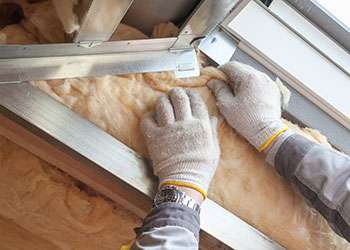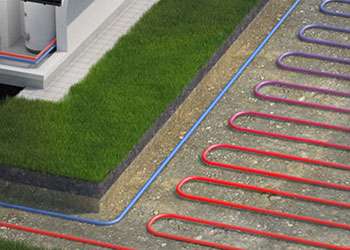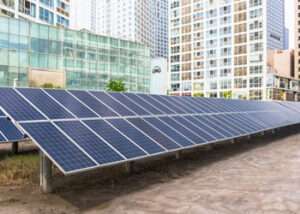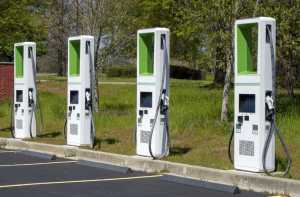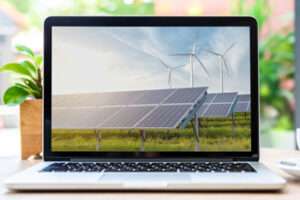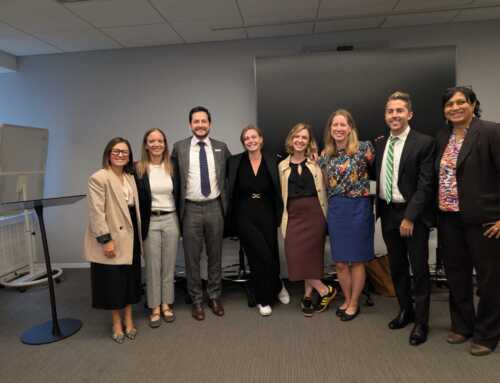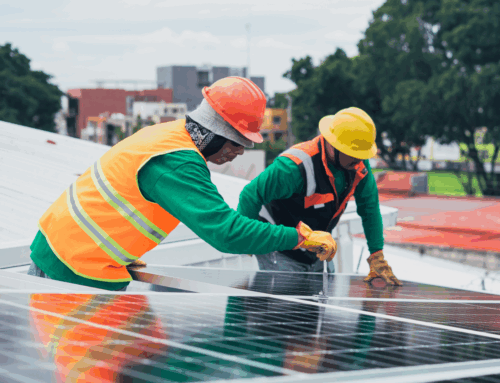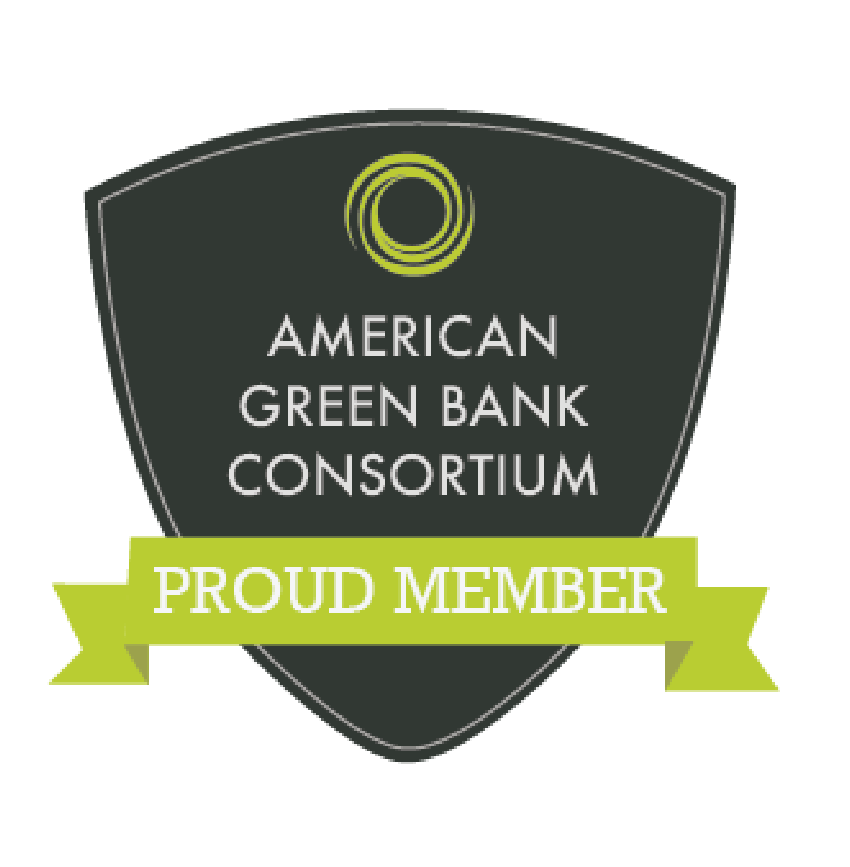Share This Post
From infrastructure demands to equitable adoption and economic considerations, Montgomery County is at the forefront of a significant shift in transportation norms.
That was the overall sentiment at the “Economics of Investing in EV Infrastructure and Fleet Electrification” panel, which brought together key industry experts to discuss the burgeoning electric vehicle (EV) revolution in Montgomery County, Maryland, and beyond.
From the rapid growth in EV adoption to tax incentives to the critical need for charging infrastructures, the event, held in Rockville, Maryland, on November 30, 2023, delivered vital issues related to the advent and advancement of the EV transformation.
Montgomery County’s EV Market Growth
When it comes to EVs, Montgomery County is at the forefront.
“The EV market is growing very quickly in Montgomery County,” said Brian Booher, Senior Planning Specialist for Zero Emissions Vehicles at the Montgomery County Department of Environmental Protection.
Booher highlighted Montgomery County’s ambitious climate goals and its significant progress in EV adoption.
“We’ve seen over a 150% increase from the beginning of 2021,” he noted, emphasizing the county’s commitment to reducing emissions by adopting zero-emission vehicles.

Booher provided a snapshot of the market, showing that plug-in vehicles now represent a significant and growing portion of new vehicle registrations in the county.
“As of last month, there are over 27,000 plug-in vehicles registered in Montgomery County,” he explained.
“By 2030, we could see 150,000 to 200,000 plug-in vehicles on the road,” he added.

“This is a huge growth, transformation of our transportation system.”
He detailed various scenarios for EV adoption, aligning with Maryland State’s Advanced Clean Cars II regulation, which aims to transition all vehicle sales to electric by 2035.
Challenges in Infrastructure
Booher’s projections showed the need for a strategic increase in charging infrastructure to support this growth.
“We are on pace for Level 3 charging but lagging for workplace, multi-family, and level 2 charging.”
By 2025, Montgomery County expects thousands of additional charging ports across various categories to accommodate the expected increase in EVs.
The demand for public Level 2 and Level 3 charging ports is noteworthy, with projections showing a several-fold increase over the current numbers.

Equitable EV Adoption
Antoine Thompson, Chief Executive Director at Greater Washington Region Clean Cities Coalition, stressed the need for equitable EV adoption.
He spoke about initiatives to deploy Level 2 chargers in disadvantaged communities and to address energy burdens in these areas.
“We’re always looking for site hosts for charging infrastructure,” Thompson said. “We’re working to deploy Level 2 chargers in disadvantaged communities… It’s important to ensure that communities that often have high energy burdens get these chargers.”
Thompson emphasized the importance of community education in promoting EV adoption.
He talked about educating real estate professionals and homeowners on the benefits of making homes EV-ready, highlighting the role of community engagement in accelerating the transition to electric transportation.
Thompson discussed how regulations like the Clean Cars II drive EV adoption and the need for supportive policies to encourage market transformation.
Maryland Excise Tax Credit offers a maximum of $3,000 for qualifying zero-emission plug-in or fuel-cell electric vehicles. Also, Maryland offers a rebate of 40% of the cost of Electric Vehicle Charging Equipment and Installation. The rebate is up to $700 for individuals, $4,000 for businesses, and $5,000 for retail service stations.
Community Engagement and Education
“There’s like an assembly line of people with all different types of questions,” he pointed out.
Thompson discussed the need for investment in infrastructure, saying, “We’ve got to get private capital, we’ve got to get places like the Green Bank, we need local and state governments to invest in infrastructure.”

Infrastructure and Economics
Colin Murchie, Vice President at Inspiration Mobility, brought a unique perspective to the discussion, focusing on the economic and infrastructural aspects of EV charging. Murchie compared individual charging stations to neighborhood grocery stores, challenging common myths about potential grid overload. “The grid can handle this new demand much like our neighborhoods handle the demands of a grocery store,” he noted.
Addressing the infrastructure challenges for EV trucks, Murchie acknowledged, “Trucks are a hard one. We’re looking at spaces accommodating up to four trucks in some areas, but it requires a balanced approach.”
This insight underlines the need for strategic planning in infrastructure development, especially for larger vehicles.
Murchie also delved into the economic implications of the EV revolution. He highlighted the potential for job creation and economic growth while addressing concerns about price manipulation in response to federal rebates. “As demand for EVs grows, we’re going to see a significant impact on the automotive market. It’s not just about the cars; it’s about the entire economy shifting gears,” Murchie explained.
His insights into the technological advances paint a picture of an evolving infrastructure landscape over the next decade. Murchie’s vision for Montgomery County is not just about adopting EVs but about transforming the economic and infrastructural fabric to support this green revolution.
The electric vehicle revolution in Montgomery County presents both opportunities and challenges. In a significant move towards bolstering its electric vehicle infrastructure, Maryland recently received a substantial boost. Governor Wes Moore, along with local lawmakers, announced a major grant that marks a pivotal moment in the state’s green energy journey.
The Maryland Clean Energy Center is set to receive a $15 million Charging and Fueling Infrastructure Program grant from the U.S. Department of Transportation, as part of President Biden’s Bipartisan Infrastructure Law. This funding will facilitate the installation of 58 new electric vehicle charging stations across Maryland, significantly expanding the state’s charging network.
Governor Moore emphasized the importance of this grant in achieving Maryland’s ambitious environmental goals. “Maryland is committed to reaching 100% clean energy by 2035 and net-zero emissions by 2045. To make these goals a reality, we need inclusive initiatives that enable every Marylander to be part of this green transition,” he stated.
As Montgomery County continues to navigate this transformative journey, it serves as a model for other regions looking towards a greener future.
The Montgomery County Green Bank (MCGB) is a publicly chartered 501(c)3 nonprofit corporation based in Montgomery County, Maryland. Its primary mission is to collaborate with lenders and investors to offer affordable financing solutions for energy efficiency and renewable energy initiatives for both residents and businesses.
By making it financially viable for property owners to adopt clean energy improvements, MCGB aims to promote a healthier, more resilient, and sustainable environment. Through partnerships with the private sector, MCGB ensures cost-effective financing for projects that not only save energy and reduce greenhouse gas emissions but also bolster a resilient economy, enhance living and working conditions, and help the County meet its environmental targets.

